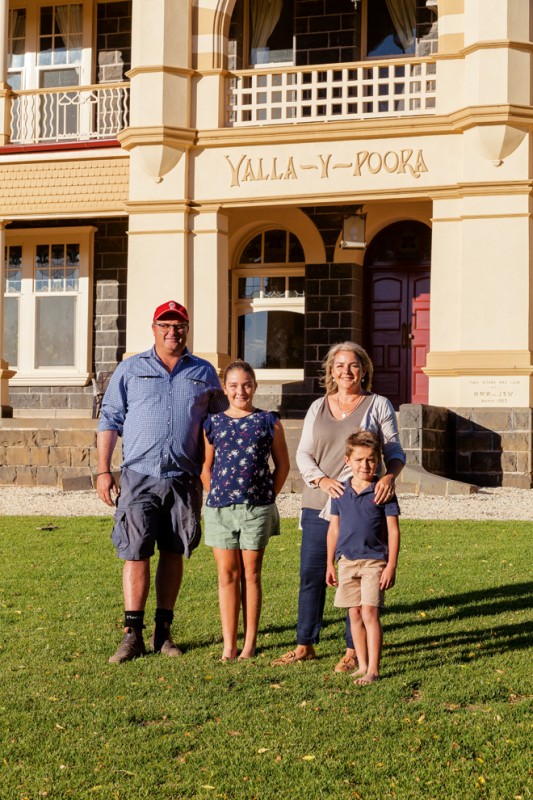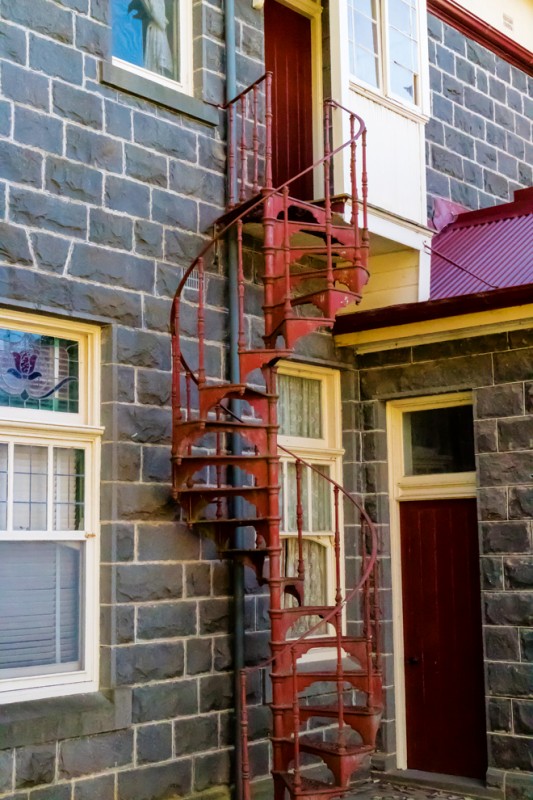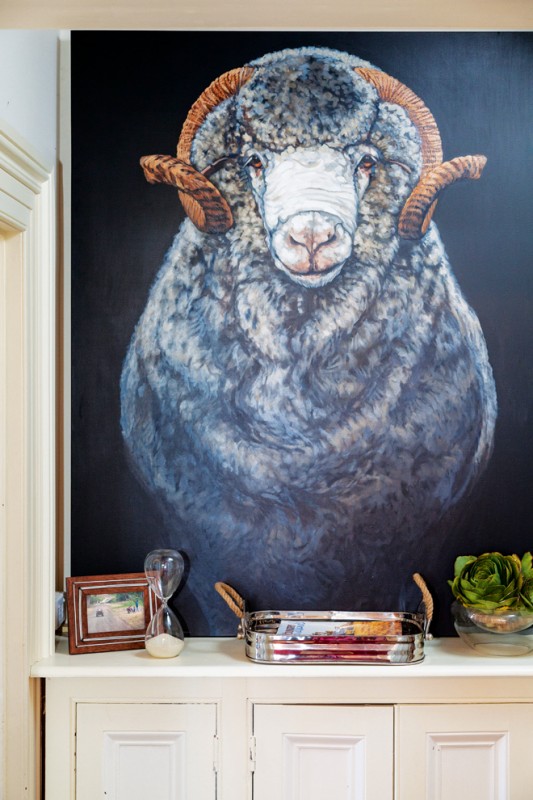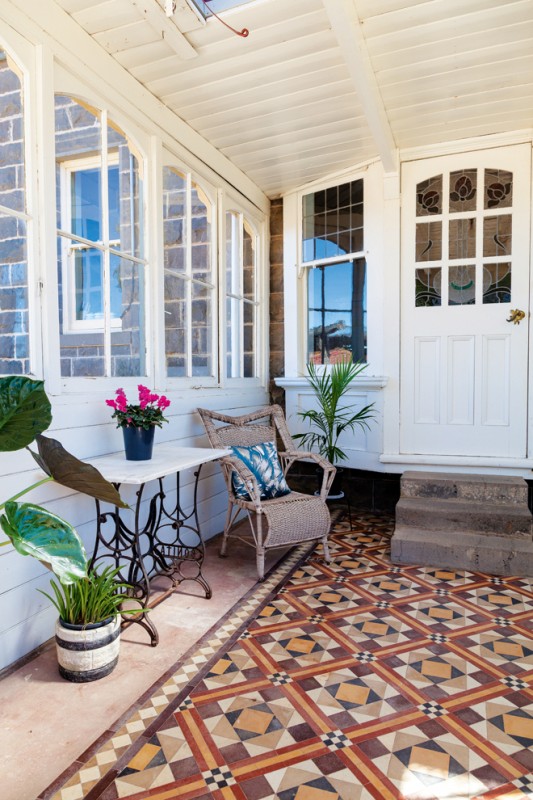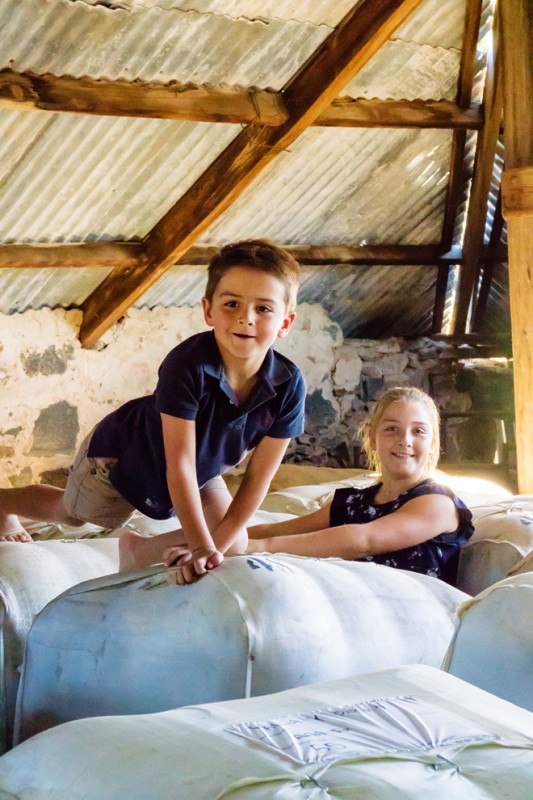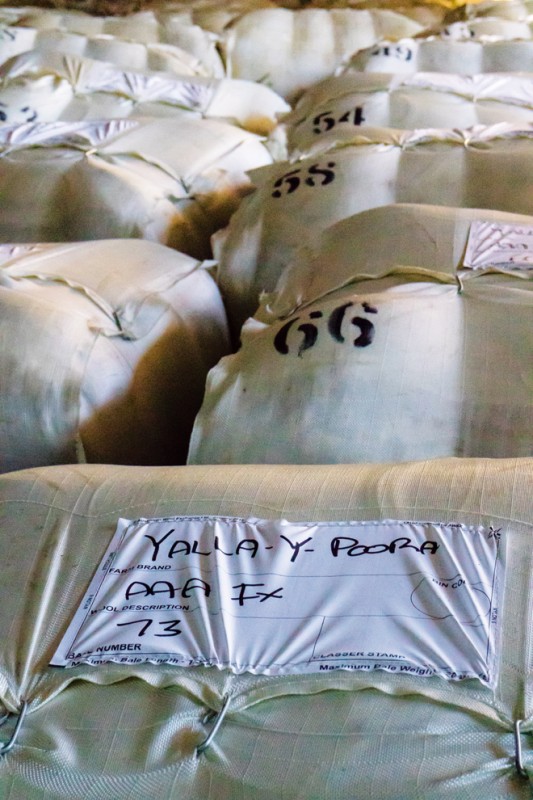
As Jane Fraser sees it, there are so many whys in Yalla-Y-Poora homestead, a huge bluestone mansion at Tatyoon in Victoria’s Western District. Why did the founding Ware family build in such a mishmash of styles? There are Gothic, Palladian, Federation and high Victorian elements to the two-storey homestead. Why is it asymmetrical? And the big why: Why did they decide to dismantle the original homestead, which was completed in 1857, and just over 50 years later, rebuild a few hundred metres away?
Yalla-Y-Poora has belonged to Jane’s husband, Tim’s family since his grandfather bought it in 1965. The 3500-acre (1400-hectare) property is a mere shadow of the 66,493-acre (27,000-hectare) original, which was taken up by squatters Thompson and Stevens in 1841 and believed to be named for an Aboriginal term meaning trees by water. They had taken five months to overland their sheep from Yass in the NSW Southern Tablelands and set up camp on the banks of the Fiery Creek. After 13 years the property was sold to James Austin, who in turn sold it to Jeremiah Ware in 1856. Jeremiah and his brothers, John and Joseph came from Tasmania to establish their sheep run and created an empire, which at its peak ran 60,000 sheep that took the shearing team in the 20-stand shed months to get through the annual clip.
While the reasons for the style of the current homestead may be lost in the mists of time, there’s absolutely no doubt about the appearance of the original as Austrian-born artist Eugene von Guerard was a friend and frequent visitor to the station and of course, painted many works during his stays at Yalla-Y-Poora. Von Guerard had come to Australia in 1852 at the beginning of the Victorian gold rush. He headed straight to Ballarat and while he didn’t find a fortune he did make a living by taking commissions from wealthy landowners, particularly in the Western District. His 1864 work paints a bucolic picture of the long, colonnaded homestead by the creek, which by that stage had been dammed by a weir to provide water for a woolscour for the sheep. A man leans on a fence, presumably surveying his estate, with a giant haystack by the house, a little church, a couple of windmills and a few outbuildings including the huge bluestone shearing shed in the distance. A horse-drawn carriage is coming up the driveway and a couple is messing about in a boat on the creek.
It’s hardly surprising that a museum-quality print of this painting is one of the Frasers’ most treasured possessions. “It just adds to the mystery of why they shifted the homestead,” Jane says. “One theory is that the house kept getting flooded. That’s not inconceivable as Fiery Creek is famous for flash floods. I’ve seen the water rise two metres in half an hour and you wouldn’t want that racing through your house. Another related thought is that rising damp forced them out. Yet another is that one of the Wares died when he was tipped out of a buggy and the family moved to get away from the memory. We will probably never know for sure, but what is certain is that they shifted everything from the front fence to the fountain and reused all the materials in the new house.”
The Wares’ tenure lasted for more than a century and during this time the holding was gradually reduced. Pressure to sell began with Lands Acts in 1862 and further increased with the introduction of new land taxes in the 1890s. Further land was resumed for soldier settlement blocks following both world wars. The property, however, continued to be a benchmark for graziers all over the country and Yalla-Y-Poora stud sheep led the way for wool production and sheep breeding. In 1924 wool from the flock set a world record and it remained as the Australian record until auction sales resumed after WWII.
Sadly, in the late 1950s and early ’60s the last Ware descendant to own the property fell on hard times and declared bankruptcy. Yally-Y-Poora was sold to Mr L Watkins in 1963, who in turn sold to the Frasers in 1965. These days the farm income comes from a mixture of crossbreed sheep, cropping and a transport company. “It’s a sign of the times that we run on two full-time staff and three truck drivers,” Tim says. “It’s hard to imagine that in the late 1800s there were 120 staff on the books.”
“It’s hard for us to imagine what it was like running a household with no mod cons,” Jane adds. “The bloke who chopped the wood must have looked forward to summer. There were something like 15 fireplaces, plus chip heaters and slow combustion stoves to feed.”
Since Tim and Jane and their children, Meg, 11 years, and Archie, aged six, moved in they have been involved in a steady process of restoration. In the early stages, Tim read an article about heritage renovator Dominic Romeo, whom readers may remember from the story about his Mount Macedon home Karori, in Australian Country issue 17.3. “We approached him for advice and he became the project manager,” Jane says. “We couldn’t have done it without him. Gradually he worked through all the jobs from replacing the roof and painting the exterior to fixing water damage, the plumbing, wiring and storm water drainage. Finally now we have reached the stage where we can start on the cosmetic work. We’ve barely even started as there are seven bedrooms and two bathrooms upstairs and the ballroom downstairs on the ‘to-do’ list.”
As with all grand old houses, there is no such thing as a little job at Yalla-Y-Poora. “I spent 10 hours cleaning windows one day,” Jane recalls. “At the end of the day, I’d only done the bottom ones. But we never for a minute regret the task we have taken on. We are always mindful that this is our home, and the happiness and comfort of the people who live here are the most important things. It will never feel or look like a museum and we’re just fine with that. We are also very grateful to have the opportunity to live here.”
The complete story was originally published in Australian Country issue 21.6. Click here to subscribe to our magazine
Words Kirsty McKenzie
Photography Ken Bass

